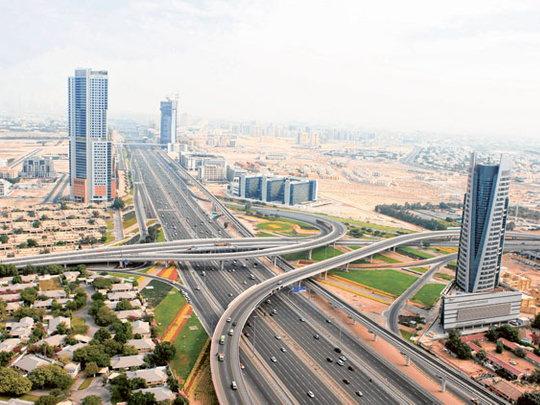
Dubai: Infrastructure investments and rapid urbanisation driven by population growth will be the key drivers of economic expansion in the Middle East, North Africa and South Asia (Menasa) region, according to an economic note from the Dubai International Financial Centre (DIFC).
"Countries that do not invest in or maintain their infrastructure are neglecting their future as well as their present, because these investments constitute the fundamental driver of the economic cycle," said Dr Nasser Saidi, DIFC's chief economist and head of external relations.
According to the DIFC note, the Menasa region is experiencing a secular wave of transformation with two epicentres, namely India and the GCC.
Key factors
The DIFC economists believe demographics and urbanisation will be two key factors that will define the economic future of the region.
With fertility rates still well above 2.2, the Menasa region will enjoy an expanding labour force, while massive internal migration will fuel the process of urbanisation.
These factors together will require a massive commitment to build indispensable infrastructure to sustain the increased population and economic growth.
While in the GCC infrastructure projects are anticipating the demand and actually stimulating it (the "build it and they will come" phenomenon), in the rest of Menasa existing infrastructure is severely stressed due to poor maintenance, underinvestment and intensive usage.
The region, especially India and the GCC countries, have been investing heavily in infrastructure development.
India has planned infrastructure development for 2008-2012 valued close to $500 billion, while the value of projects planned or under way in the GCC is close to $2.9 trillion (Dh10.65 trillion), as of last April, the DIFC paper said. The governments' role as the largest providers of infrastructure financing in the region must be redefined given the crisis and resultant fiscal constraints.
Saidi argued that the role of the private sector must be enhanced through privatisation and Public-Private Partnerships (PPPs).
"We need an investment of between $75 and $100 billion a year in infrastructure to sustain the region's growth rates and to boost its economic competitiveness," said Saidi.
"While there are some PPP schemes in the region, we require special PPP laws to mitigate the risks and changes to tendering policies and processes to further develop this participation and attract private sector funds," he added.
Knowledge-based
In the GCC, the main driver of infrastructure investments is the oil windfall that for the first time in history is not merely amassed in offshore assets, but is increasingly deployed domestically to transform the Arabian Peninsula into an advanced 21st century knowledge-based economy.
The DIFC note suggests that increasingly the region's sovereign wealth funds (SWFs) are investing their resources into domestic infrastructure developments.
Preqin, a consultancy, in its 2011 Sovereign Wealth Fund Review, revealed that the proportion of SWFs investing in infrastructure has risen from 47 per cent in 2010 to 61 per cent at the beginning of 2011, while real estate and private equity have risen from 51 per cent to 56 per cent and from 55 per cent to 59 per cent respectively, over the same time period.












